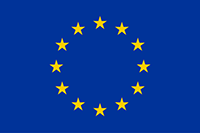
Introduction
BBMRI-ERIC is one of the 13 candidate Nodes of the EOSC Federation. See the dedicated page on the EOSC website.
Forming the European Open Science Cloud (EOSC), it champions research data management and application to guarantee scientists’ access to data-driven science.
The European Open Science Cloud (EOSC) stands at the intersection of Europe’s strategic priorities, offering solutions to critical challenges in research, innovation, and societal development. As a transformative tool, EOSC fosters digital sovereignty, inclusivity, trust, and transparency in the research and innovation domain. It is designed not only to support the Open Science movement but also to underpin Europe’s broader competitiveness agenda. The deployment of a network between data repositories and services will be instrumental for Open Science to progress in Europe.
There are three major areas where BBMRI-ERIC provides significant contribution to the EOSC Federation: its expertise in the sensitive health data domain; deployment of key technologies in alignment with Technical Readiness Level Nine and evolution of harmonised service provision that utilises the One Health paradigm.
Node profile
Name: BBMRI-ERIC EOSC Node
Coordinating organisation: BBMRI-ERIC (Biobanking and BioMolecular Resources Research Infrastructure – European Research Infrastructure Consortium)
Contributing organisations: 22 member and 3 observer countries and WHO/IARC; ~500 biobanks; each member/observer constitutes a national node (e.g. BBMRI-AT, BBMRI-NL, BBMRI-SE).
Abstract: The BBMRI-ERIC EOSC Node integrates Europe’s biobanks and biomolecular resources into the EOSC Federation. It provides GDPR-compliant, FAIR access to biosamples, genomic, imaging, and clinical data across ~500 biobanks in 25 countries. The Node enables secure federated analysis environments, contributes to the European Health Data Space (EHDS2), and supports AI-driven biomedical research with multicentric validation of models and biomarker discovery.
Key objective: To establish the BBMRI-ERIC Node as the biomedical/sensitive health data EOSC Node, enabling FAIR and secure federated access to data, GDPR-compliant analysis, and cross-border research in alignment with EHDS2.
Science areas: Biomedical and clinical research, genomics, biomarker discovery, personalised medicine, oncology, population health, One Health.
Scientific impact and scientific use cases:
- MCVAL: Multi-centric AI validation for prostate cancer diagnosis (collaboration with NCN Poland).
- MCBIO: AI biomarker discovery for colorectal cancer.
- Cross-node integration with EOSC-PL, CVTI SR, and Life Science Node.
Impact: Accelerates biomedical AI development, improves diagnostics, and supports personalised medicine.
Summary of FAIR data provided by Node: FAIR data from ~500 biobanks: genomics, imaging, clinical metadata. BBMRI Directory ensures findability; federated secure compute ensures accessibility and interoperability under GDPR and EHDS2 frameworks.
Status: Candidate Thematic Node (Build-up phase; 2025–2026)
Technical status: Federated AAI (Life Science AAI, ELIXIR AAI integration, EOSC AAI compliant). Onboarded service catalogues (BBMRI Directory, Negotiator, Sample Locator).
Timelines and milestones:
2025:
- Q2: Finalise Node governance and architecture
- Q3: Integration of BBMRI Directory and Negotiator with EOSC EU Node
- Q4: Demonstration of MCVAL use case (multi-centric AI validation)
2026:
- Q1: Production-level Node operational
- Q2: Integration of HPC compute and monitoring tools
- Q3: EHDS2-compliant federated compute pilot
- Q4: Demonstration of MCBIO use case (AI biomarker discovery)
Deliverables:
- D1.1 MCVAL-SINGLE-HPC: Short report on run of RationAI model on MUG data on compute capacities of single EOSC Node
- D1.2 MCVAL-SINGLE-HPC: Report on multi-centric validation of RationAI prostate model and on utilization of compute capacities of single EOSC Node
- D2.1 MCVAL-MULTI-HPC: Short report on run of RationAI model on MUG data on compute capacities of multiple EOSC Nodes
- D2.2 MCVAL-MULTI-HPC: Report on multi-centric validation of RationAI prostate model and on utilization of compute capacities of multiple EOSC Nodes
Access: Through the BBMRI Directory, Negotiator, and Sample Locator. Federated AAI ensures EOSC User access.
Rules of participation/Access policy: Based on BBMRI-ERIC AUP and Policy for Access to Biological Samples and Data; aligned with EOSC Federation rules and GDPR.
Interactions with other (candidate) Nodes and EU Node: Collaborates with EOSC-PL, CVTI SR, ICSC, CSC, SURF, EOSC EU Node. Strong synergies with EHDS2.
Capabilities of Node: Federated services: AAI, Directory, Negotiator, Sample Locator. Data repositories: ~500 biobanks across 25 countries. Other: GDPR-compliance frameworks, training materials, EHDS2 integration




